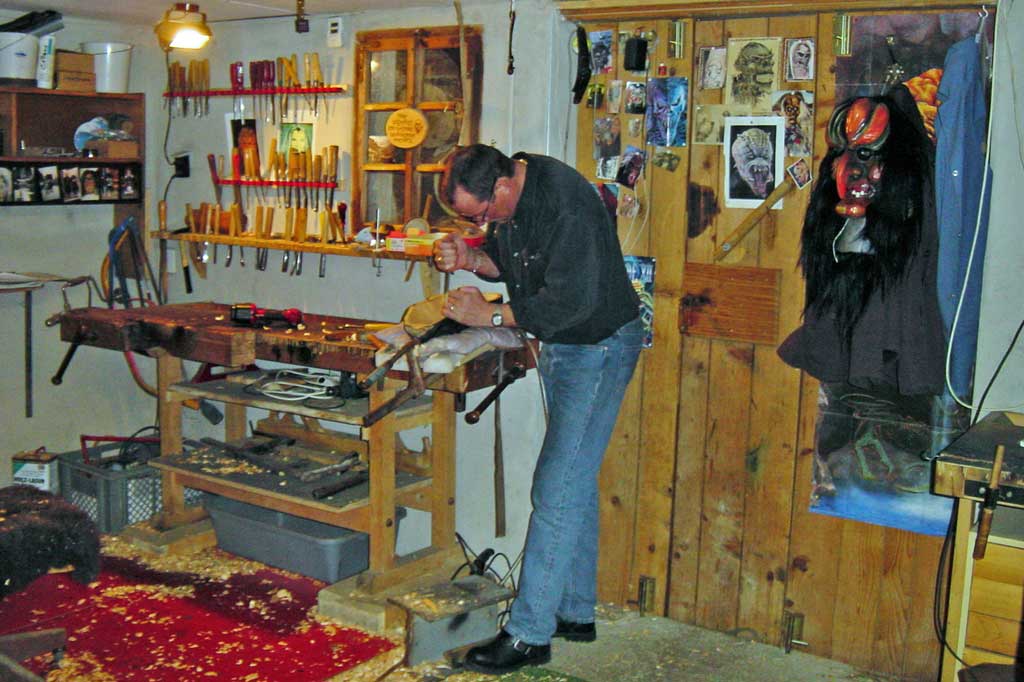Tschäggättä, carnival figures typical to the Lötschental region, are instantly recognisable due to their carved wooden masks, mostly made from Swiss pine, their animal pelts (goat or sheep skin), and the bell that hangs from their belt. From 3 February – the day after Candlemas – to midnight on Shrove Tuesday, they rampage through the village streets in pursuit of women and children. Once caught, theTschäggättärub their icy gloves over the faces of their victims. The economic and social development of the valley since the 1950s have transformed this tradition from a courtship ritual practised solely by local bachelors. Today, married men, women and children also don the masks, skins and bells of theTschäggättä.
As the result of the popularity of the Lötschental as a winter tourist destination, theTschäggättähave lost some of their wild, carnival spirit and now tend to parade in an orderly fashion through the local villages. Now synonymous with the region, theTschäggättähave become a major attraction for visitors and the media, both national and international. However, their symbolic role raises the question of how representative they are of the region and what criteria should be used to judge their authenticity. Yet, these tensions have a positive effect by helping to ensure that the tradition is kept alive and passed down to the next generation.















